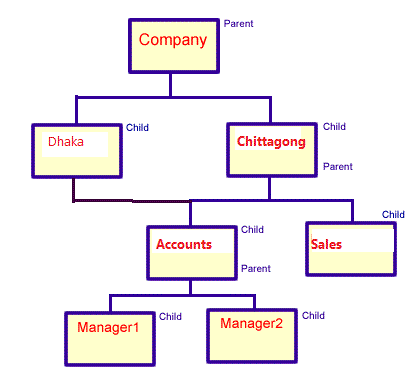DBMS > Data Model > What is Network Data Model?
Network Data Model
The network model first appeared around 1950 and was the most popular model before the relational model untill 1990s. In fact, this model is an extension of the hierarchical model. This model is the same as the hierarchical model, the only difference is that a record can have more than one parent. It replaces the hierarchical tree with a graph.

Example: In the example below we can see that node account is child and it has two parents both Dhaka and Chittagong. This was earlier not possible in the hierarchical model.
Features of a Network Model
- Ability to Merge more Relationships: In this model, as there are more relationships so data is more related. It has the ability to manage one-to-one relationships as well as many-to-many relationships.
- Many paths: As there are more relationships, there can be more than one path to the same record. This makes data access fast and simple.
- Circular Linked List: The operations on the network model are done with the help of the circular linked list. The current position is maintained with the help of a program and this position navigates through the records according to the relationship.
Advantages of Network Model
- The data can be accessed faster as compared to the hierarchical model. This is because the data is more related in the network model and there can be more than one path to reach a particular node. So the data can be accessed in many ways.
- As there is a parent-child relationship so data integrity is present. Any change in parent record is reflected in the child record.
Disadvantages of Network Model
- As more and more relationships need to be handled the system might get complex. So, a user must be having detailed knowledge of the model to work with the model.
- Any change like updation, deletion, insertion is very complex.
Feedback
ABOUT
Statlearner
Statlearner STUDY
Statlearner